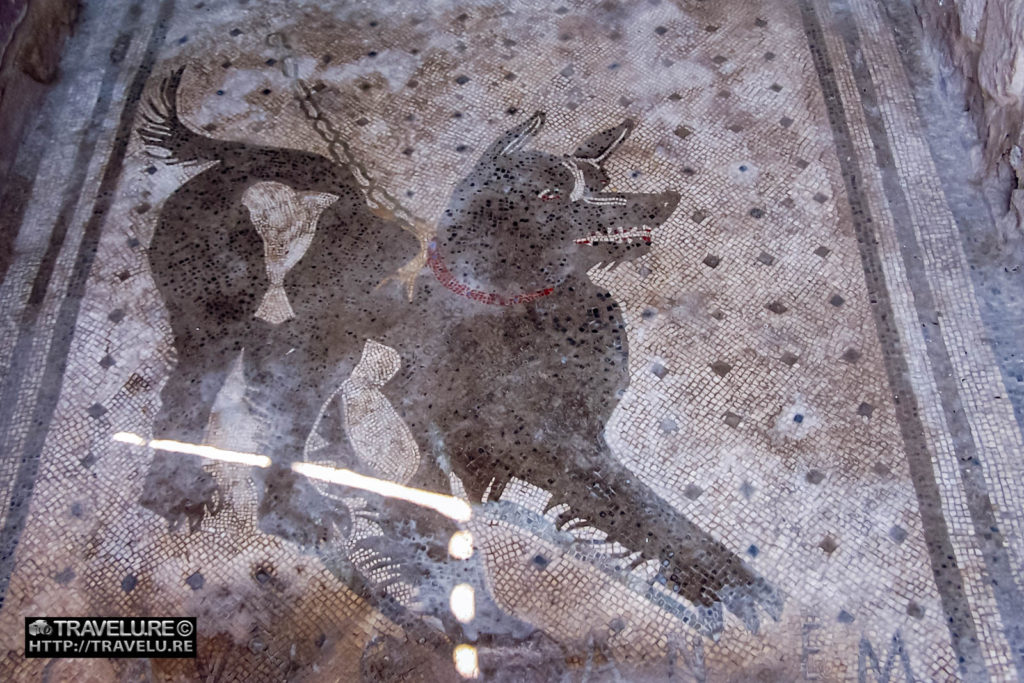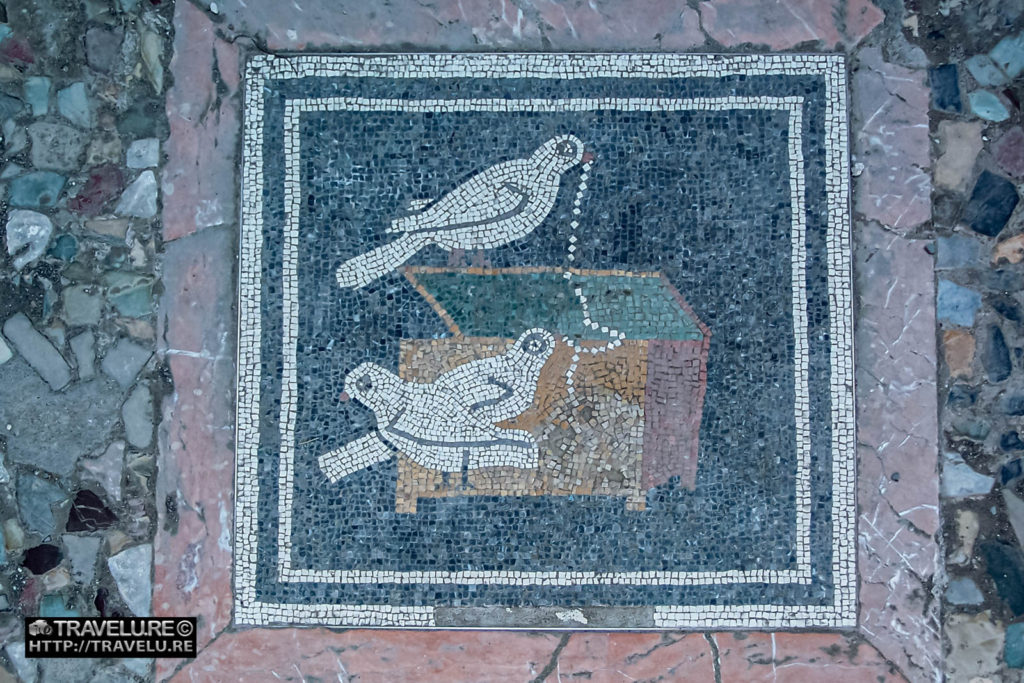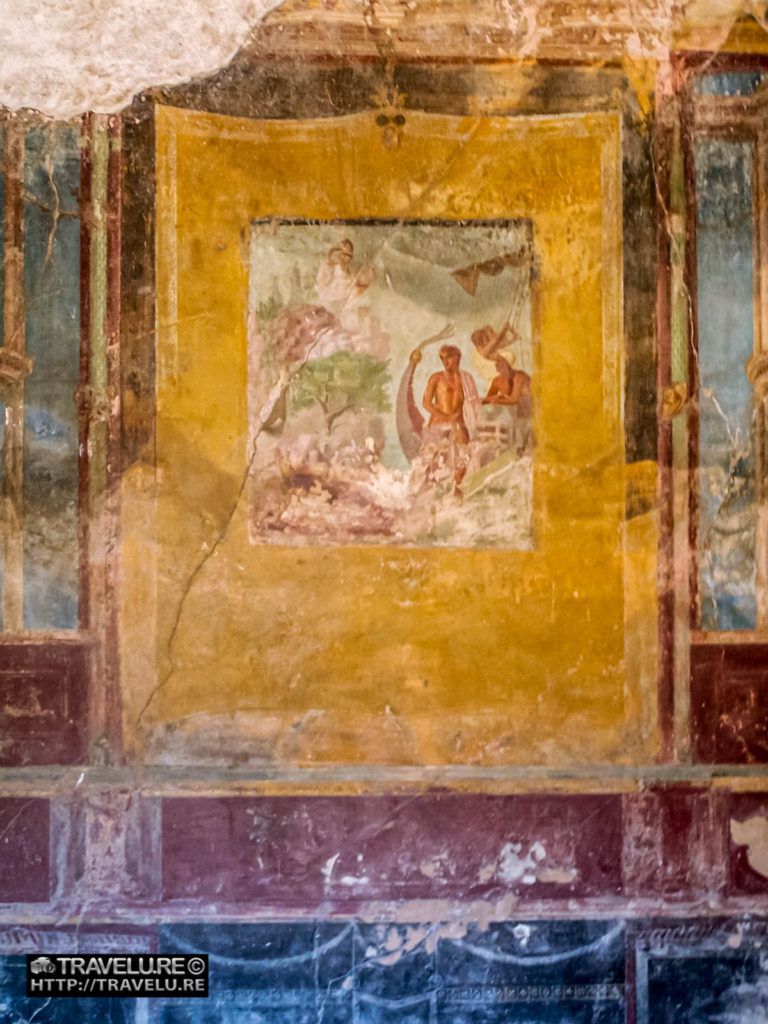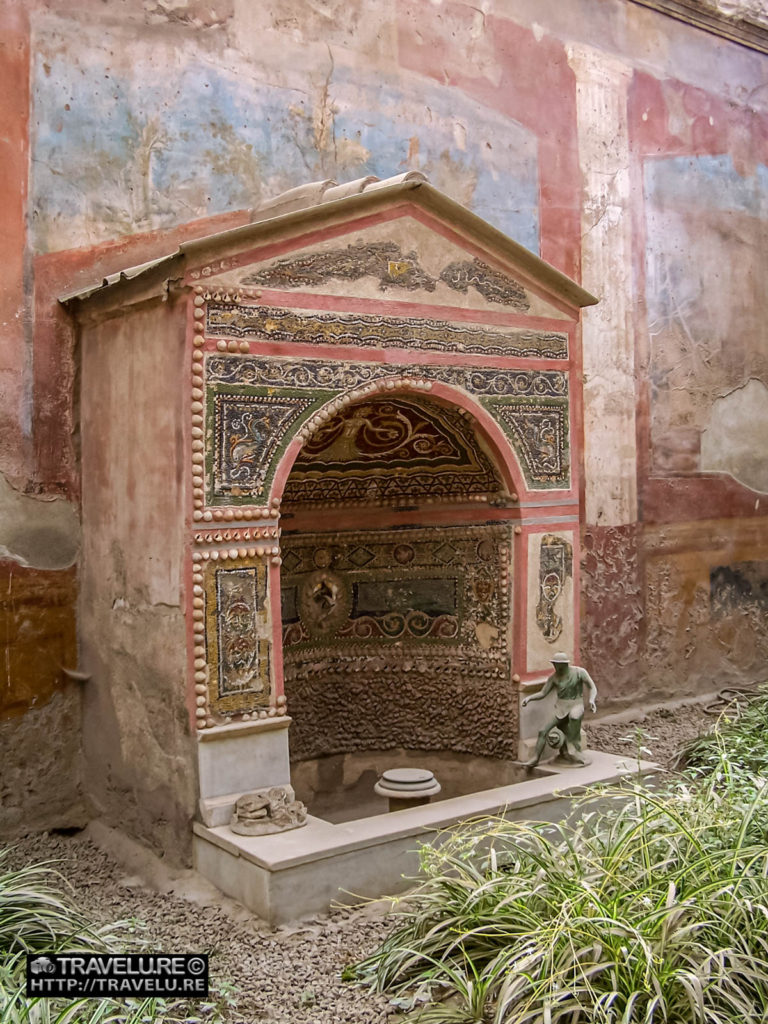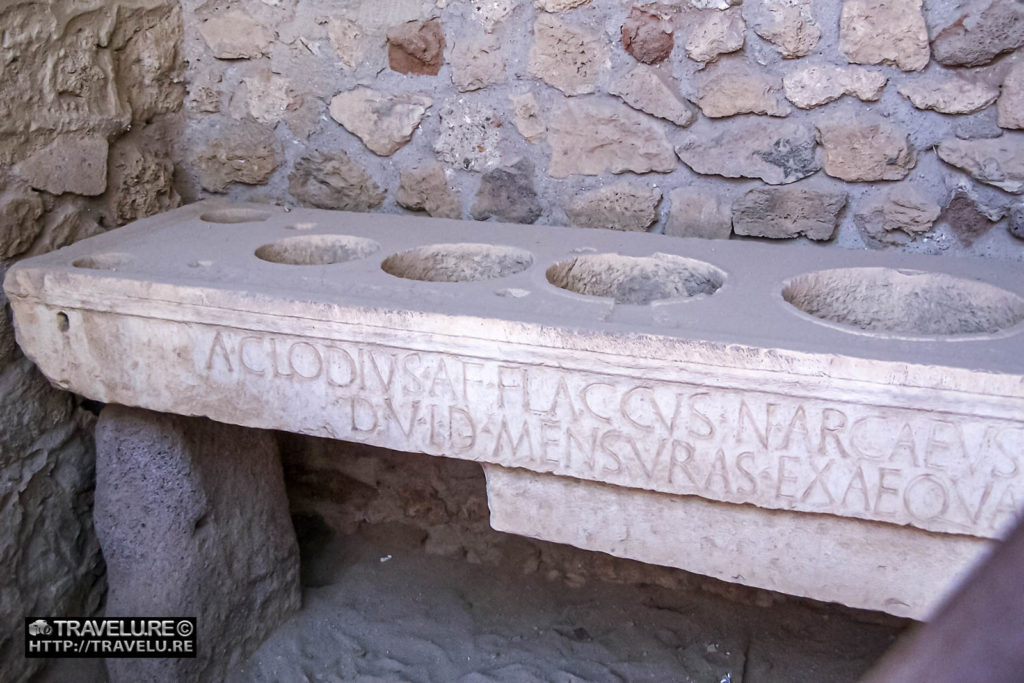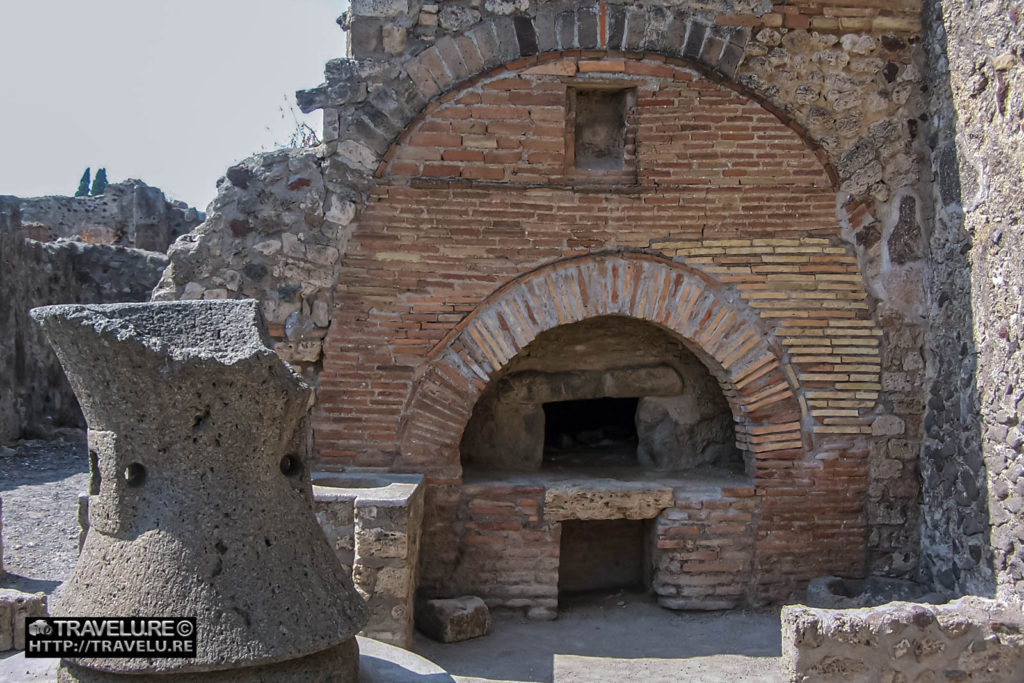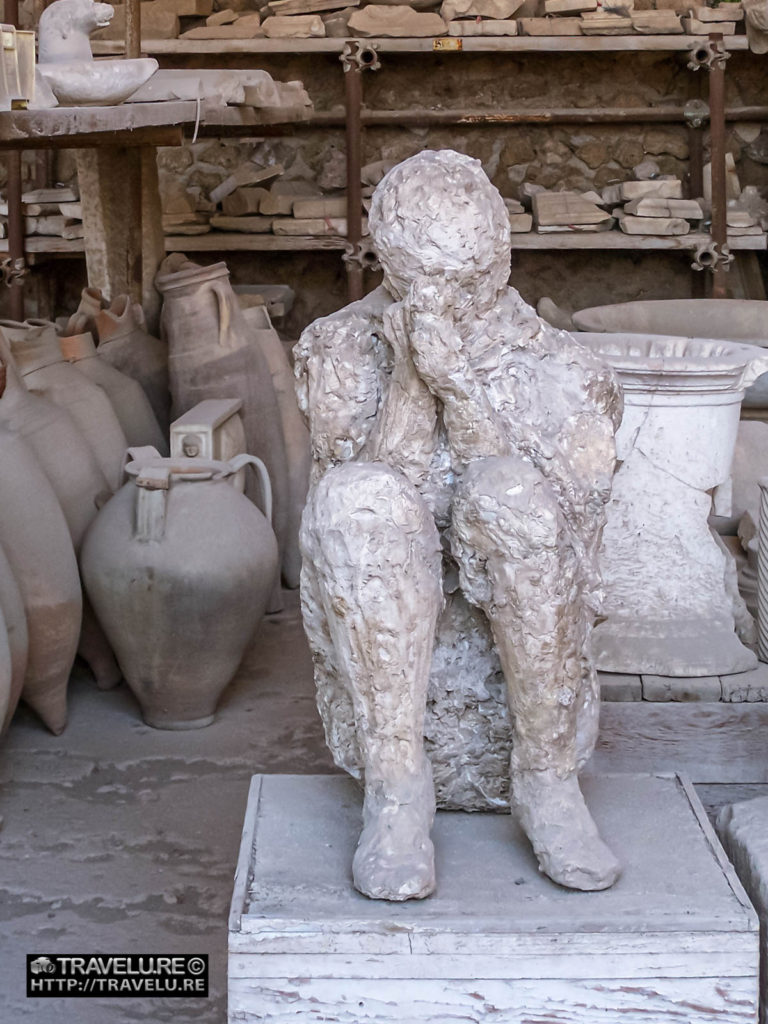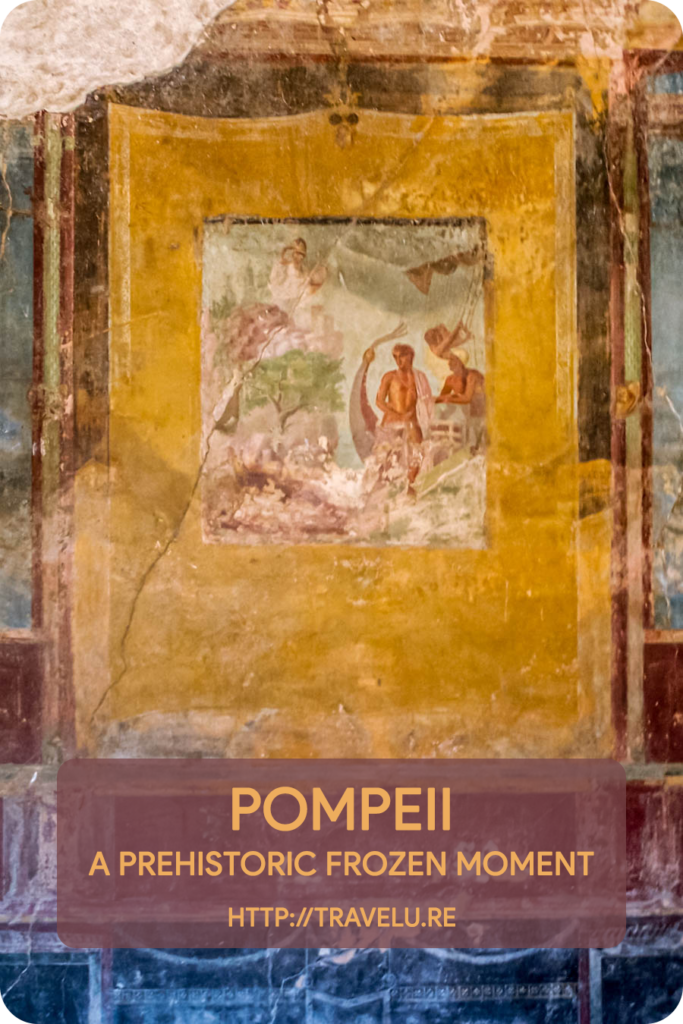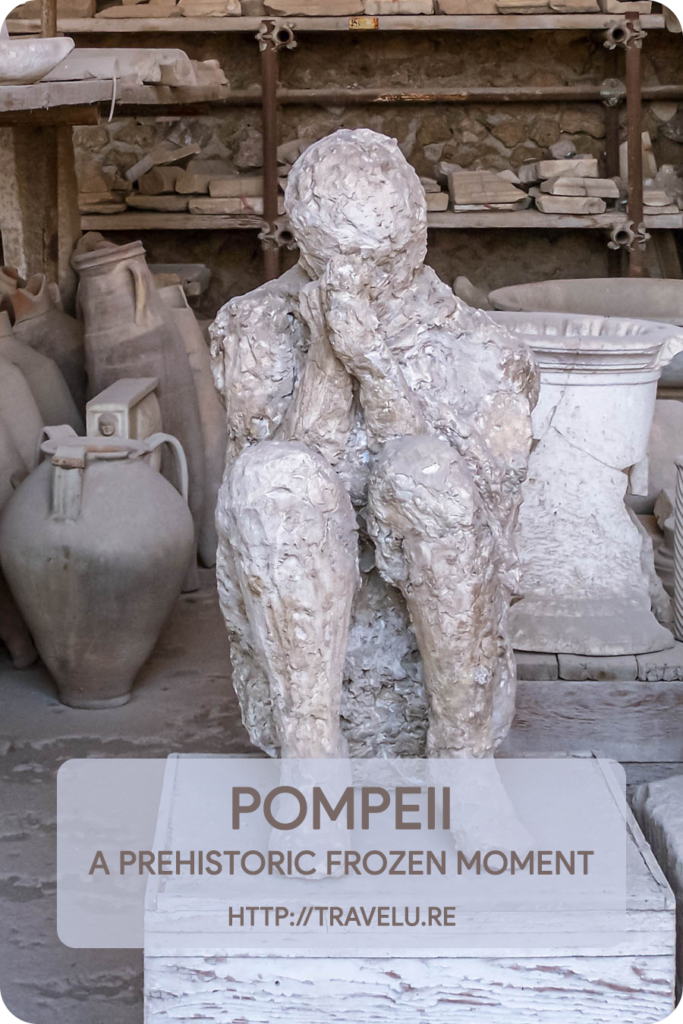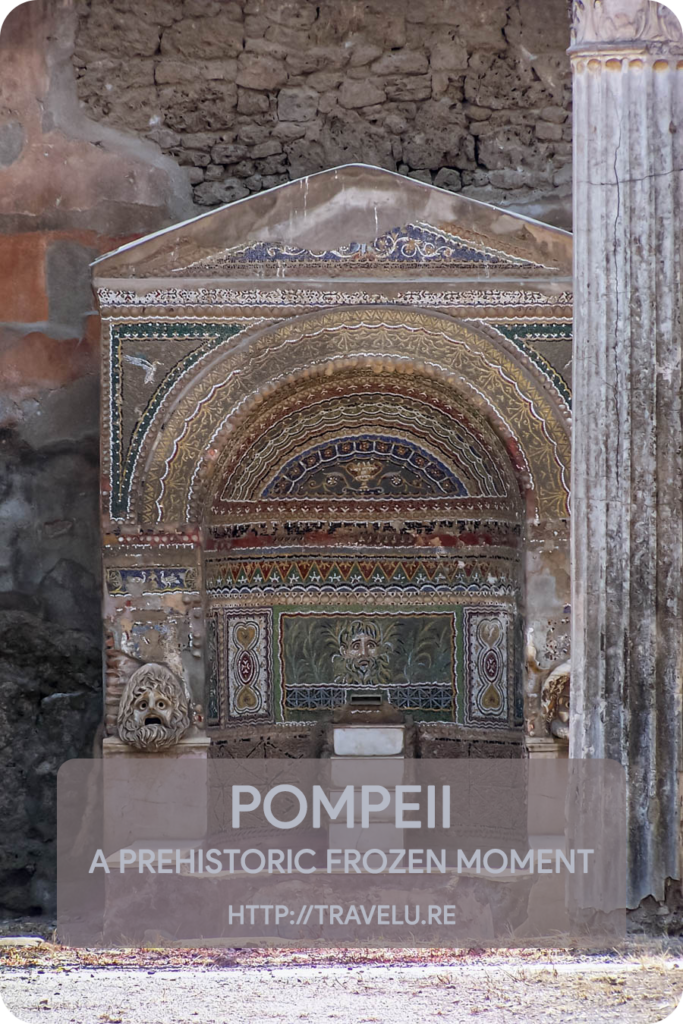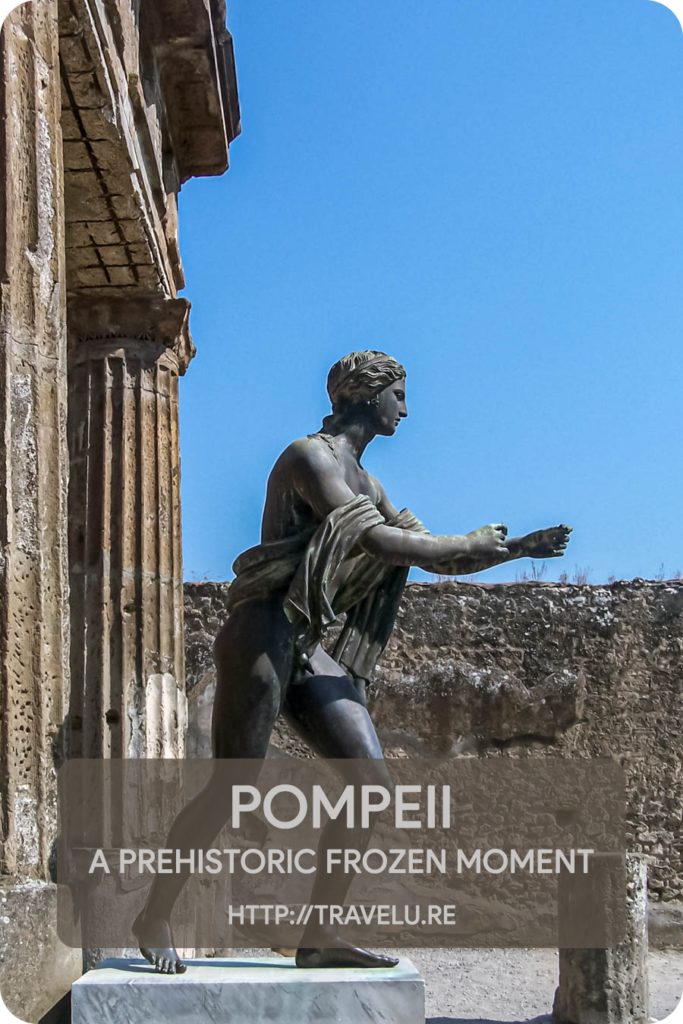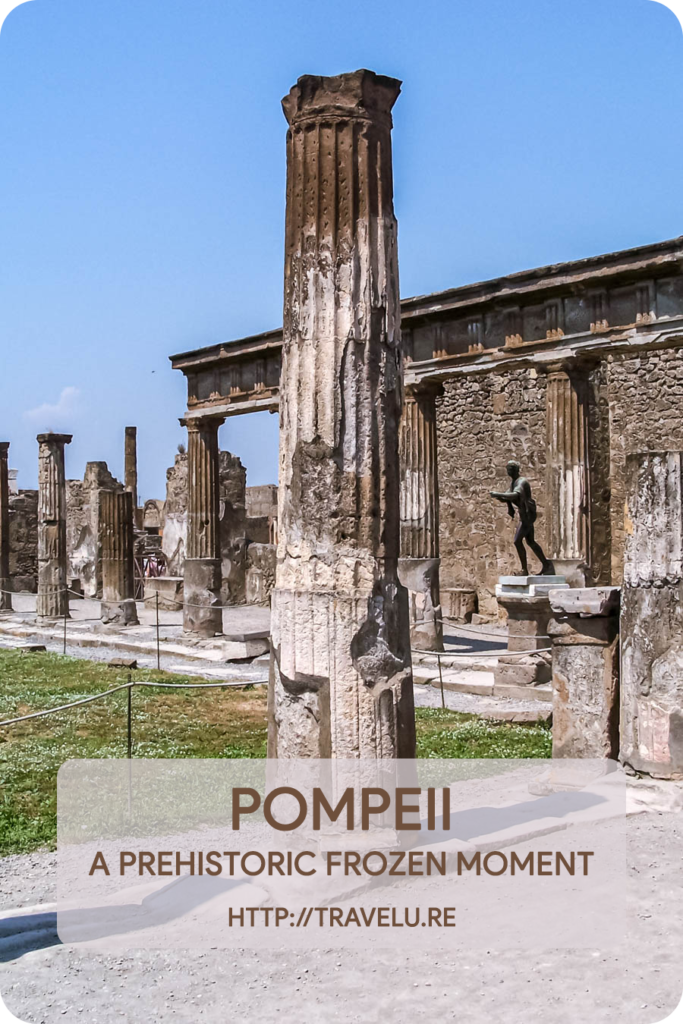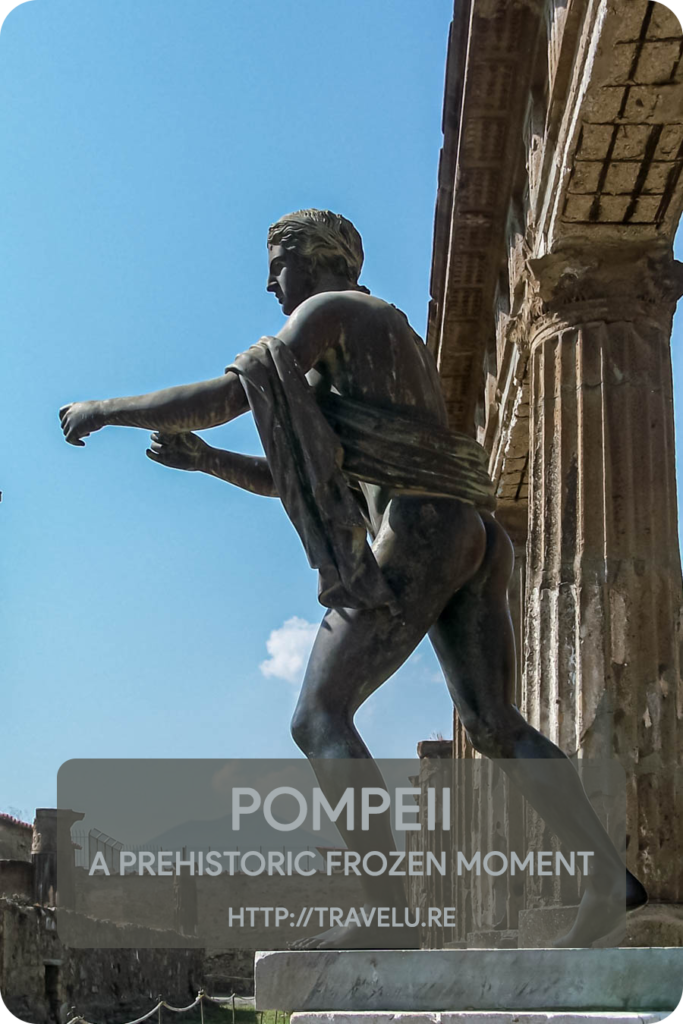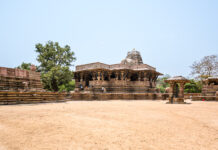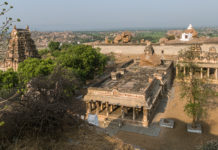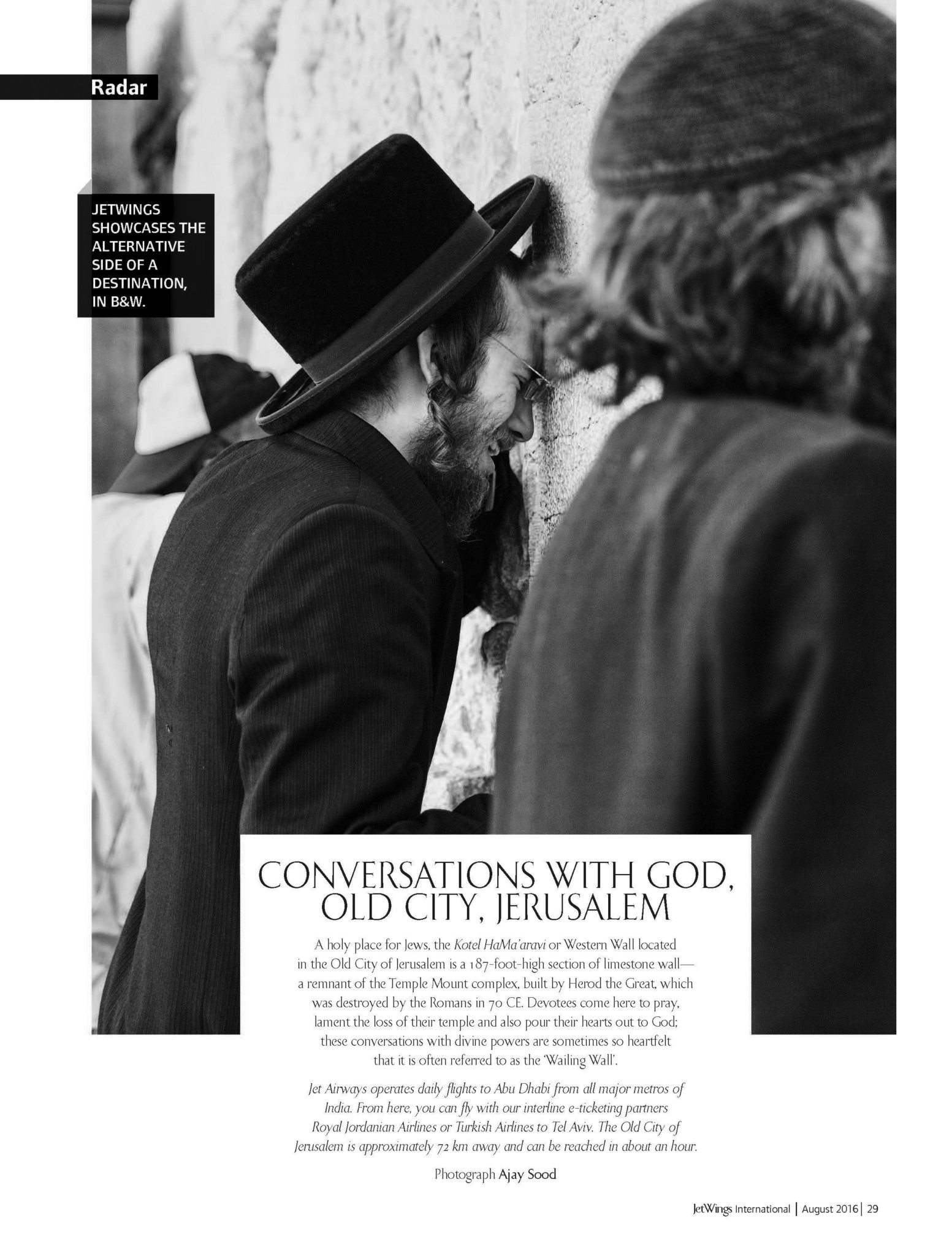Pompeii – A Prehistoric Frozen Moment
After my trip up north from Rome to Florence, I followed it up with a sojourn south. To Pompeii. A comfortable 3-hour drive took us past Naples to the Pompeii Archeological Park entrance. In the neighbourhood of Naples (Napoli, or Neapolis), Pompeii features amongst the top 5 most visited ancient sites in the world, the other four being the great wall of China, Xian terracotta soldiers, Colosseum, and Forum in Rome.
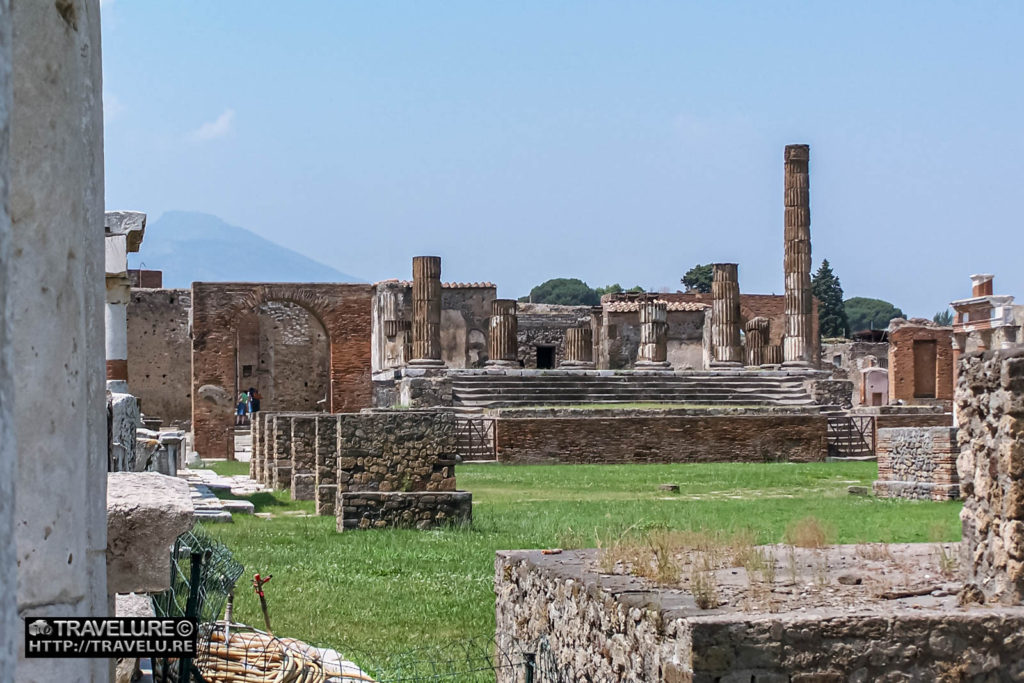
UNESCO inscribed it on the World Heritage Sites’ list in 1997 as an unparalleled archeological site that provides ‘a complete and vivid picture of society and daily life of a specific moment’ almost 2000 years ago. When Mount Vesuvius erupted in 79 CE!
A moment that buried Pompeii, a resort town of 2,000, and Herculaneum. It killed over 16,000 people, including the well-heeled vacationers from Greece, the rest of Italy, and beyond.
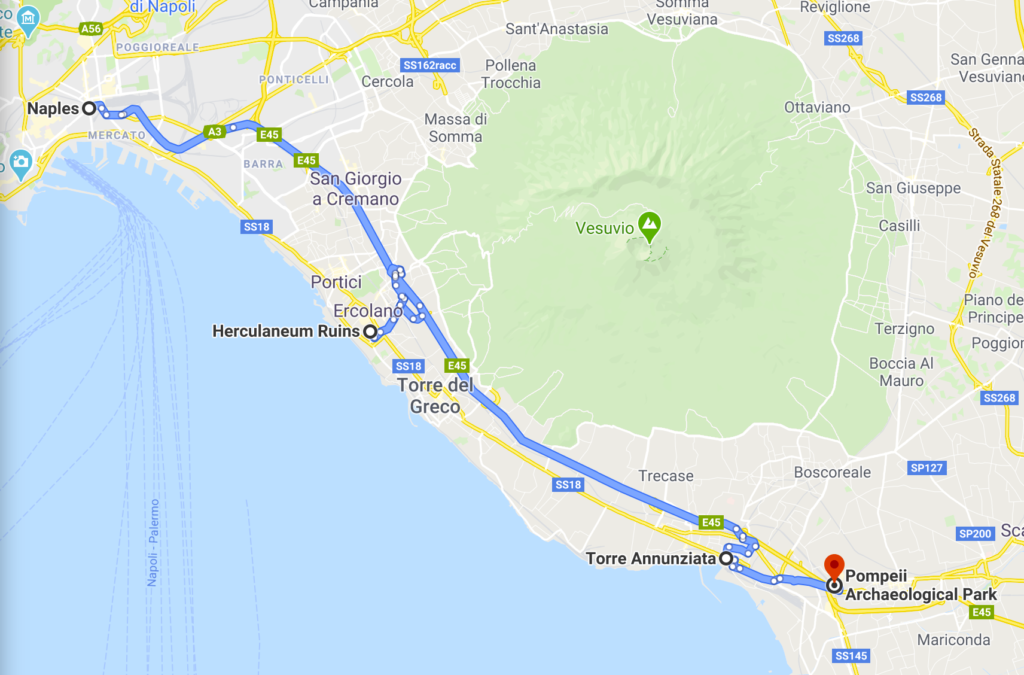
Not unusual for this region. The Italian Peninsula is where African and Eurasian tectonic plates meet. That accounts for the region’s instability. Earthquakes and volcanic eruptions are common here. But that day, Vesuvius erupted with a force 100,000 times more powerful than the nuclear explosion at Hiroshima!
A Day Trip to Pompeii
It was a hot summer day, the temperature hovering around 35°C. When a fellow traveller complained of the heat, our guide was quick to point out the residents of Pompeii faced 20 times the heat on a fateful day in 1st century CE.
The archeological park entrance from the west takes you to one block of excavated Pompeii. The site seems like an unfinished film set with a garden, pathways, arches, columns, half-built villas, and more. Looking left, you spot the gradual-sloped Mount Vesuvius looking harmless and blue through the haze.
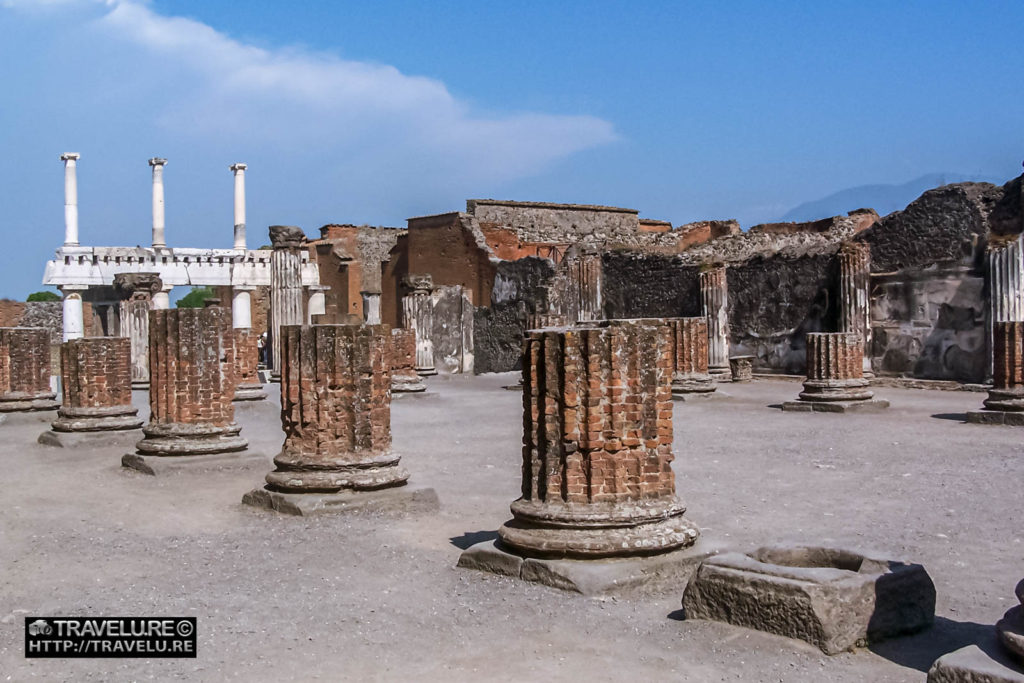
A Poor Little Rich Town
As you progress, the site reveals itself. The excellent workmanship stares you in your face and does not need a preface. Even before your guide starts his commentary, you know you are in a town of men with means. Little wonder as the locals were cash crop and farm produce traders dealing in olives, fish, giant clams, exotic fruits, sandalwood, spices, and silk.
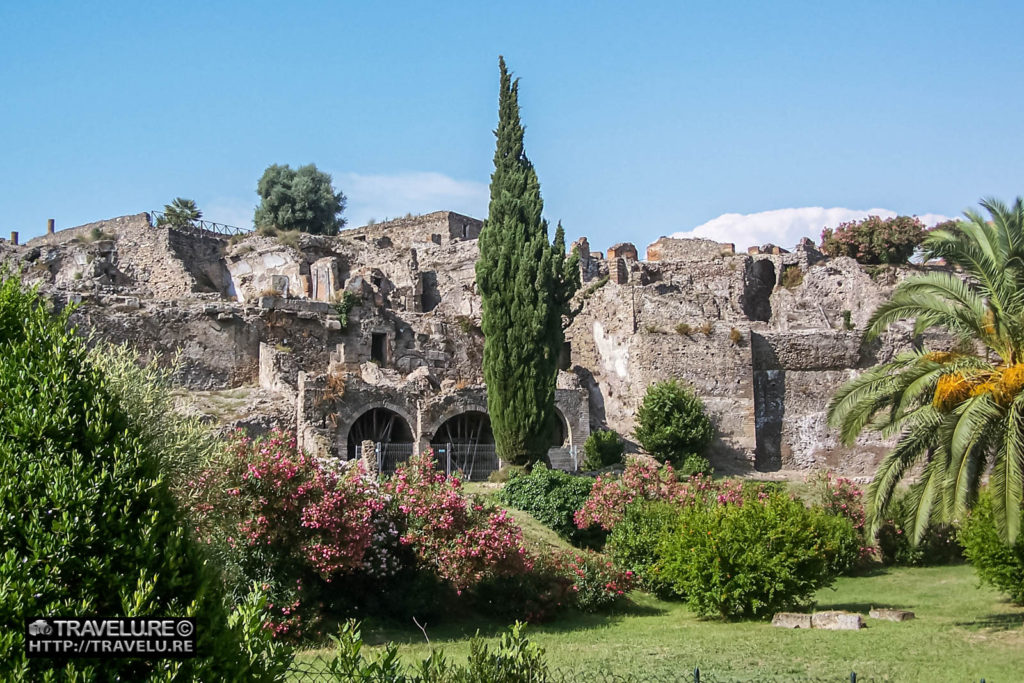
This large excavated township has shops, modest housing, villas, temples, taverns, baths, public latrines, water towers, churches, shrines, eateries, and theatres. To boot, there are many public fountains around this planned settlement. All the stuff that defines a prosperous community.
Regular villas here have splendid bronze statues to welcome you. You pass through tiny private gardens that line the frontage. The rooms within sport some stunning floor mosaic. The dilapidated walls display bright coloured murals. And there is a sprinkling of finely carved stone objects all around.
The place also has its own share of public eateries. Their gazebos have platforms with sunken bowls for buffets – the pre-historic version of fast-food. The spaces for alfresco dining have pizza ovens tucked in corners. And some chimneys to keep the smoke out. It is ironic the town could not keep smoke, ash, debris, poisonous gases, and pumice out when nature delivered them.
Frozen In Time
The Vesuvius eruption buried Pompeii under 16 feet of ash and debris. While the build-up of the eruption was gradual, the locals ignored it. But after the build-up, when the lava broke free, it hit the town like a tsunami of ash, gases, and more. The molten disaster engulfed the people in whatever position they were in (see video). Decades after it buried them alive, while the ash turned solid, the bodies decomposed and vanished, leaving a hollow of their shape in the solidified earth.
One of the excavating archeologists, Giuseppe Fiorelli, noticed it in the 1880s and struck upon a clever idea to pour plaster into these cavities. In effect, he made plaster casts of the human bodies. These casts have provided a wealth of data about the daily life of the times. It will be accurate to say Fiorelli created the first 3D photograph ever!
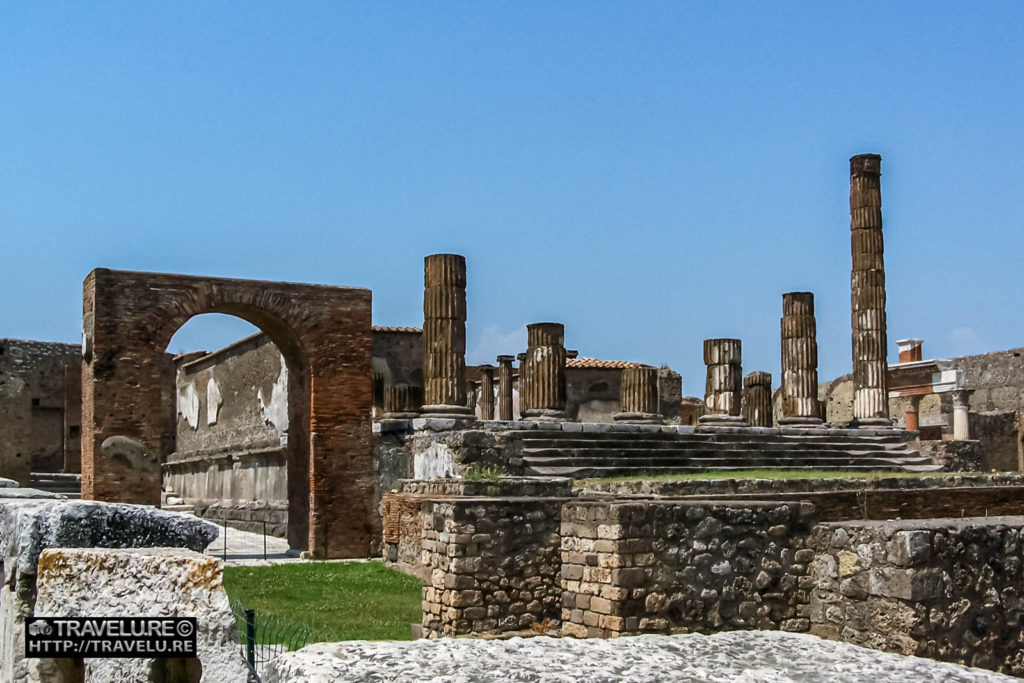
It amazed me no end to see the everyday objects and the casts of people together. I could visualise them using those objects. Somehow, for the past few decades, the excavated remains of a frozen moment were coming apart for lack of funds and general apathy. But recent news gives me hope. UNESCO and other benefactors provided a large tranche of money to shore up the eroded township.
While that may be the case, seismologists are predicting another apocalyptic Vesuvius eruption soon. And this ancient document in brick and mortar will not survive that. So don’t miss out. Before it vanishes for good, plan a trip.

